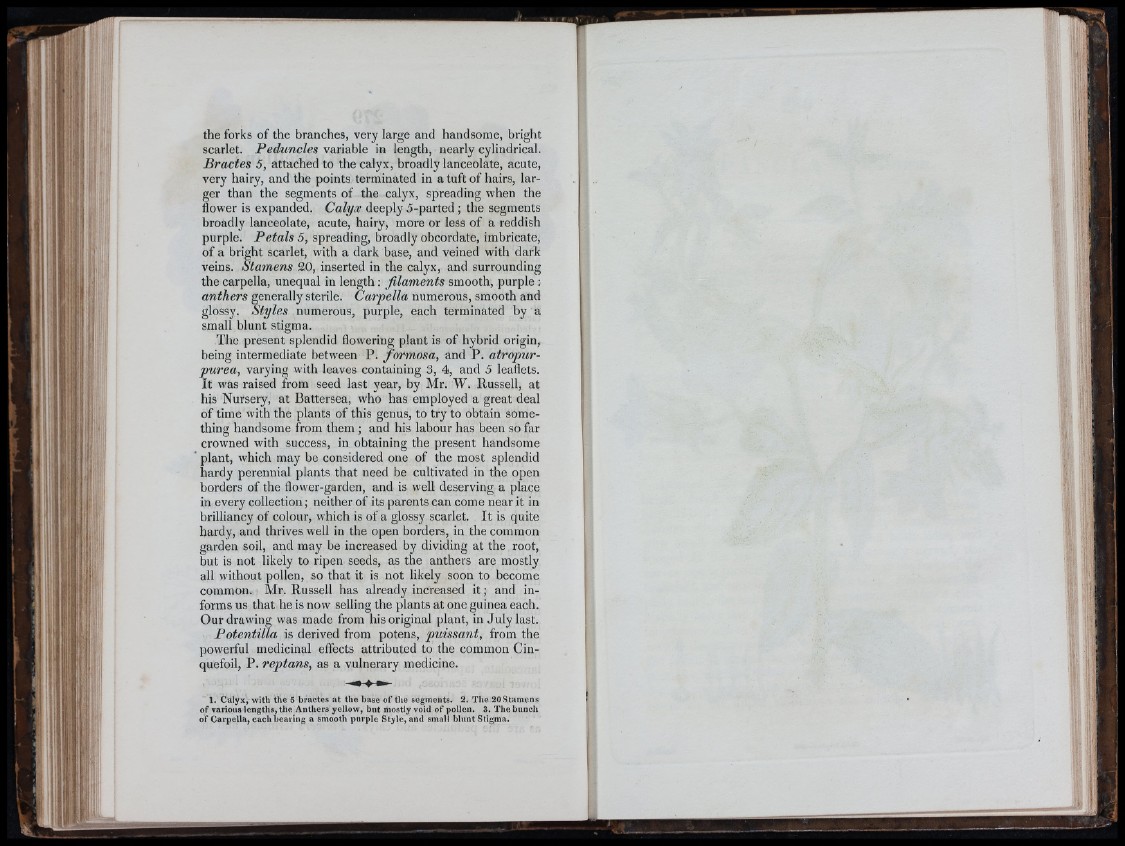
the forks of the branches, very large and handsome, bright
scarlet. Peduncles variable in length, nearly cylindrical.
Bractes 5, attached to the calyx, broadly lanceolate, acute,
very hairy, and the points terminated in a tuft of hairs, larger
than the segments of the calyx, spreading when the
flower is expanded. Calyx deeply 5-parted ; the segments
broadly lanceolate, acute, hairy, more or less of a reddish
purple. Petals 5, spreading, broadly obcordate, imbricate,
of a bright scarlet, with a dark base, and veined with dark
veins. Stamens 20, inserted in the calyx, and surrounding
the carpella, unequal in length : filaments smooth, purple ;
anthers generally sterile. Carpella numerous, smooth and
glossy. Styles numerous, purple, each terminated by a
small blunt stigma.
The present splendid flowering plant is of hybrid origin,
being intermediate between P. formosa, and P. atropurpúrea,
varying with leaves containing 3, 4, and 5 leaflets.
It was raised from seed last year, by Mr. W. llussell, at
his Nursery, at Battersea, who has employed a great deal
of time with the plants of this genus, to try to obtain something
handsome from them ; and his labour has been so far
crowned w'ith success, in obtaining the present handsome
plant, which may be considered one of the most splendid
hardy perennial plants that need be cultivated in the open
borders of the flower-garden, and is well deserving a place
in every collection; neither of its parents can come near it in
brilliancy of colour, which is of a glossy scarlet. It is quite
hardy, and thrives well in the open borders, in the common
garden soil, and may be increased by dividing at the root,
but is not likely to ripen seeds, as the anthers are mostly
all without pollen, so that it is not likely soon to become
common. Mr. Russell has already increased i t ; and informs
us that he is now selling the plants at one guinea each.
Our drawing was made from his original plant, in July last.
Potentilla is derived from potens, puissant, from the
powerful medicinal effects attributed to the common Cinquefoil,
P. reptans, as a vulnerary medicine.
1. Calyx, with the 5 bractes at the base o f the segments. 2. The 20 Stamens
o f various lengtlis, the, Antliers yellow, but mostly void o f pollen. .S. The bunch
o f Carpella, each bearing a smooth purple Style, and small blunt Stigma.